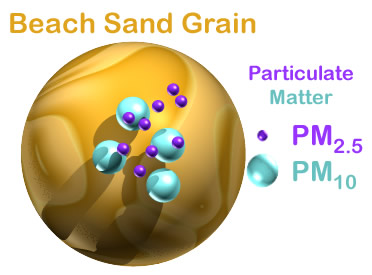New Study Adds To PM Harms: Exposure Linked to Increases in Juvenile Delinquency

The first study to look at the effects of PM pollution exposure on the social behavior of children found that that the more bad air a child inhaled, the more likely they were to engage in delinquent activity.
Published in December’s Journal of Abnormal Child Psychology by researchers at UCLA, UC Irvine, and Orebro University in Sweden, “Longitudinal Analysis of Particulate Air Pollutants and Adolescent Delinquent Behavior in Southern California” is already a landmark study in the growing field of PM research. It further demonstrates the similarities between PM and the handful of other neurotoxins linked to delinquency – like lead.
While past studies have identified a range of neurological impacts associated with PM pollution, including Autism and Parkinson’s Disease, this is the first time it’s been linked specifically to anti-social behavior. According to the authors, cumulative exposures were found to result in developmental differences lagging as many as 3 to 4 years behind the norm.
Not surprisingly, African-American boys, and children who lived in neighborhoods with poorer air quality and less green space had both higher PM exposure levels and higher delinquency rates.
This is only the latest reason why Downwinders at Risk has identified PM as Air Pollution Enemy #1. There’s not another pollutant that’s been linked to so many different health harms – from lung cancer to strokes and heart attacks, to immune and reproductive system damage to a host of brain illnesses both profound and subtle.
All of these harms are caused by “normal” levels of exposure to PM. And that’s why that exposure level must come down.
